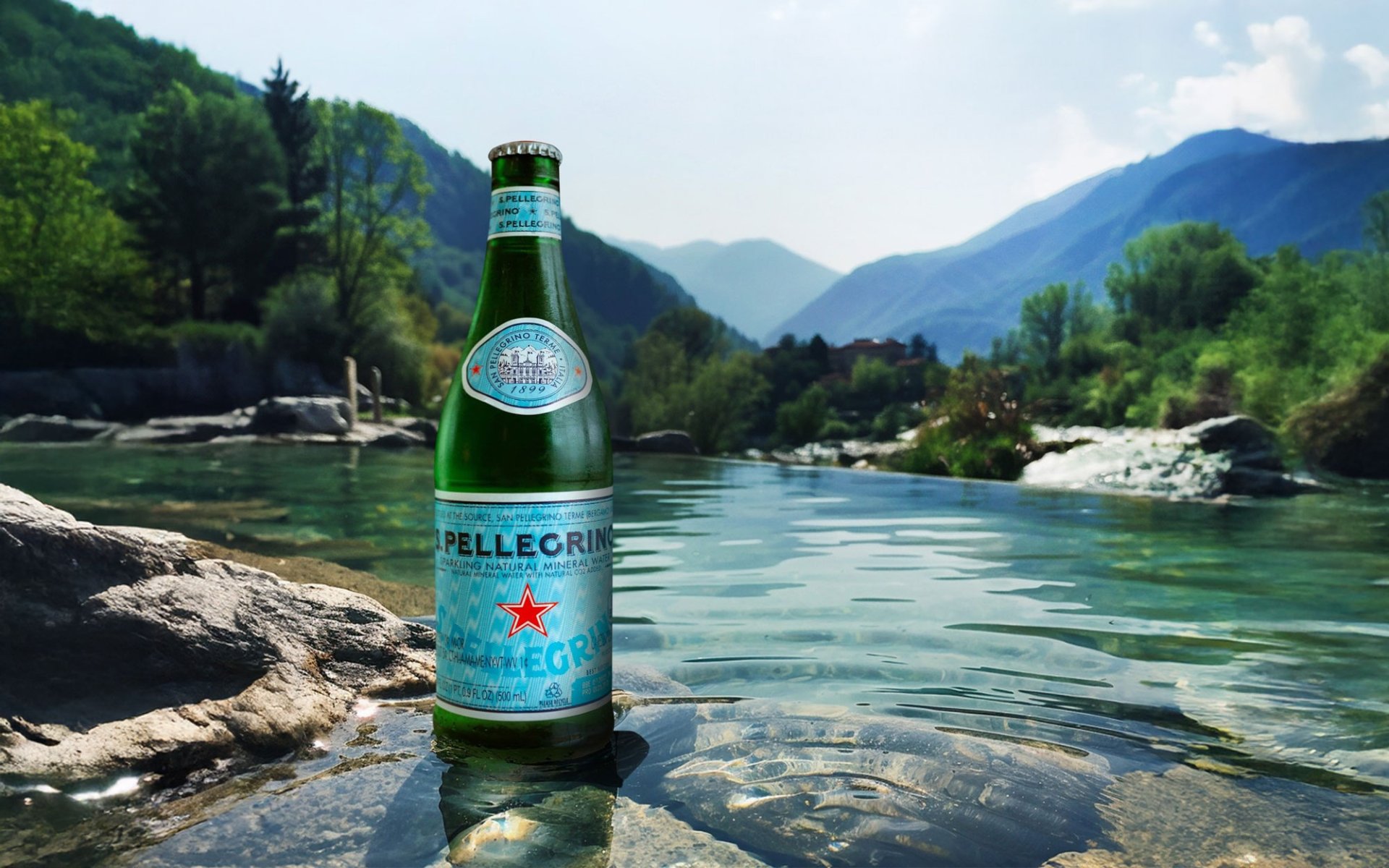San Pellegrino

San Pellegrino is an exquisite natural mineral water sourced from an ancient natural spring with a history dating back to the 13th century. It is located in San Pellegrino Terme, a town nestled in the Val Brembana valley at the foothills of the Italian Alps in northern Italy. Today, Rimping Supermarket invites you to delve into the story of this global mineral water brand that has been with humanity for over six centuries.
Origins from Healing Properties and Bottling for Export (13th Century - 1899 AD)
The story of San Pellegrino begins in the town of San Pellegrino Terme, which has been renowned for its mineral-rich water sources since the 13th century. Legend has it that in ancient times, these mineral waters were praised for their various healing properties.
San Pellegrino mineral water flows from the Dolomitic Alps at an elevation of 1,200-1,300 meters above sea level. The water takes at least 30 years to flow through rocks before reaching San Pellegrino Terme. Along its journey, the water naturally becomes enriched with various minerals.
Recognizing the potential of this mineral-rich water, the local community founded the Società Anonima delle Terme di S. Pellegrino in 1899 to bottle and export natural mineral water to various regions. In its first year, the company bottled an impressive 35,343 bottles, with 5,562 bottles shipped to countries across Europe.
From Therapeutic Resort to Global Brand (1901 - 1908 AD)
After being exported throughout Europe, San Pellegrino mineral water quickly gained popularity. In 1901, the company established a resort offering mineral baths, boosting tourism. They advertised the water's beneficial properties for skin care and physical therapy, which attracted significant interest from European aristocracy.
Later, in 1906, the company built The Casino of San Pellegrino Terme in the Art Nouveau style, designed by Romolo Squadrelli, a renowned Milanese architect. This hotel rapidly gained popularity among royalty, politicians, and other high-ranking individuals worldwide. During their stay, guests were served this natural mineral water, which led to San Pellegrino mineral water being recognized as a premium drinking water.
By 1908, the popularity of San Pellegrino mineral water had spread worldwide, as the company expanded its distribution beyond Europe to places like Cairo, Calcutta, Shanghai, the United States, Brazil, Peru, and Australia.
Concurrently, the company began advertising San Pellegrino mineral water in local and national newspapers. The advertisements featured vintage-style images illustrating the beneficial properties of the mineral water, with slogans such as The best table water and The true queen of the table.
Innovation Expansion to Flavored Beverages and Sustainability (1932 - Present)
Recognizing the growing market for flavored beverages, in 1932, Ezio Granelli, the new director of San Pellegrino, created an innovative, refreshing, and delicious drink called Aranciata San Pellegrino. It was an orange-flavored soda made from San Pellegrino mineral water, packaged in beautifully shaped glass bottles.
After launching Aranciata San Pellegrino, the company achieved great success. They then began developing new flavors to meet consumer demands, such as Aranciata Amara, Chinotto, and Limonata.
Throughout the 20th century, San Pellegrino continued to embrace innovation. The company invested in modern and stylish bottle designs, making San Pellegrino a symbol of luxury, while maintaining high-quality ingredient production. Today, San Pellegrino has rapidly become a staple beverage in fine dining restaurants, available in over 105 countries worldwide.
Currently, San Pellegrino is not only a symbol of luxury but also a leader in sustainability. The brand has implemented numerous initiatives, such as San Pellegrino Sparkling Natural Mineral Water, to reduce its environmental impact, including sustainable water management practices and eco-friendly packaging.


